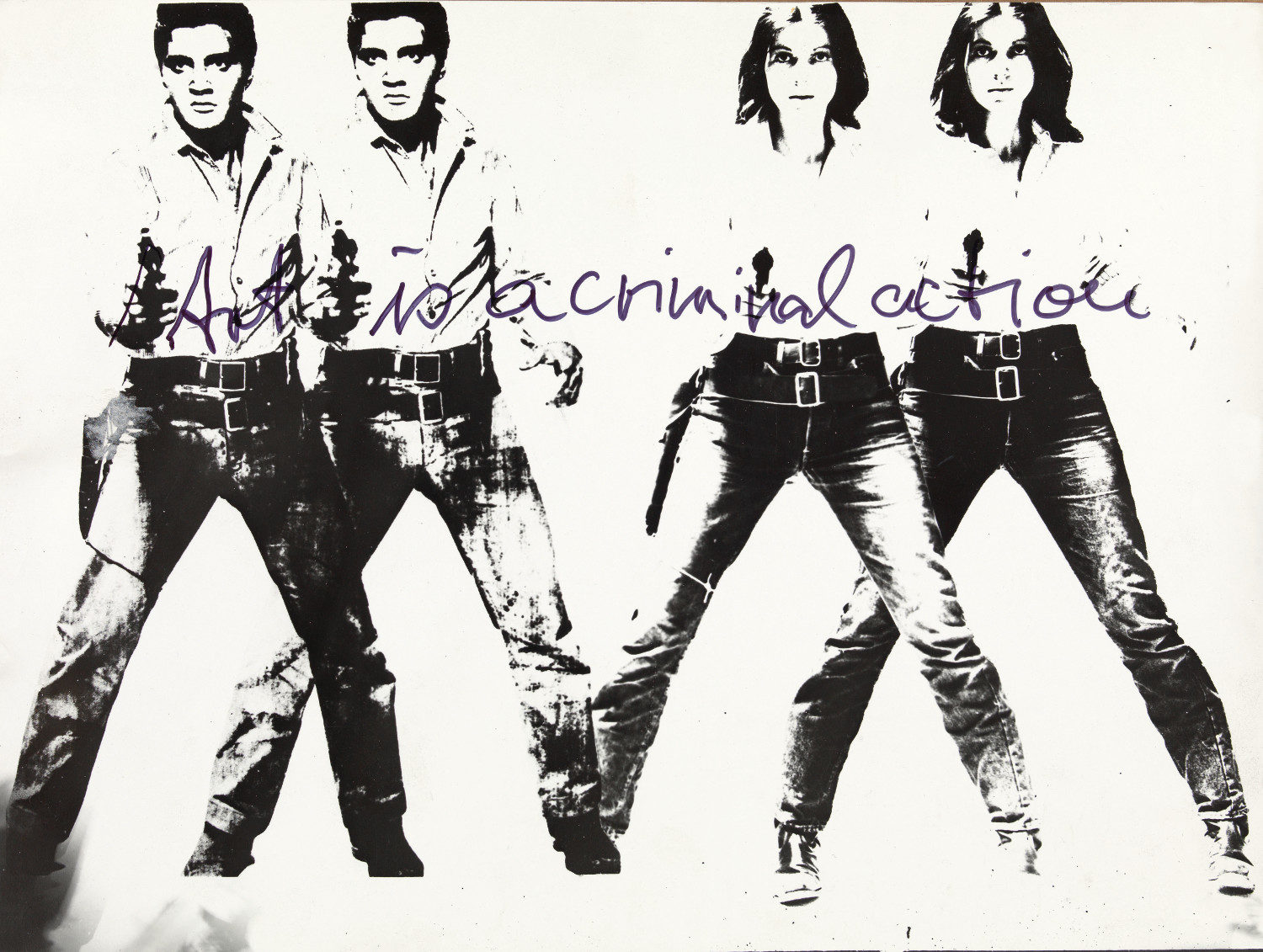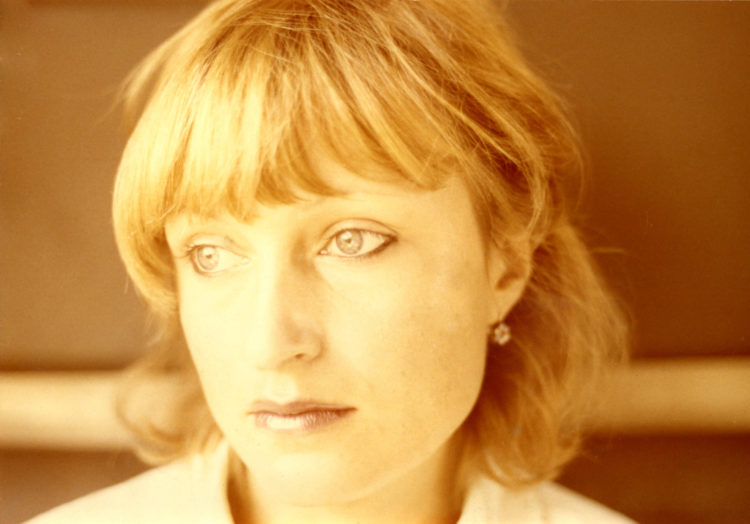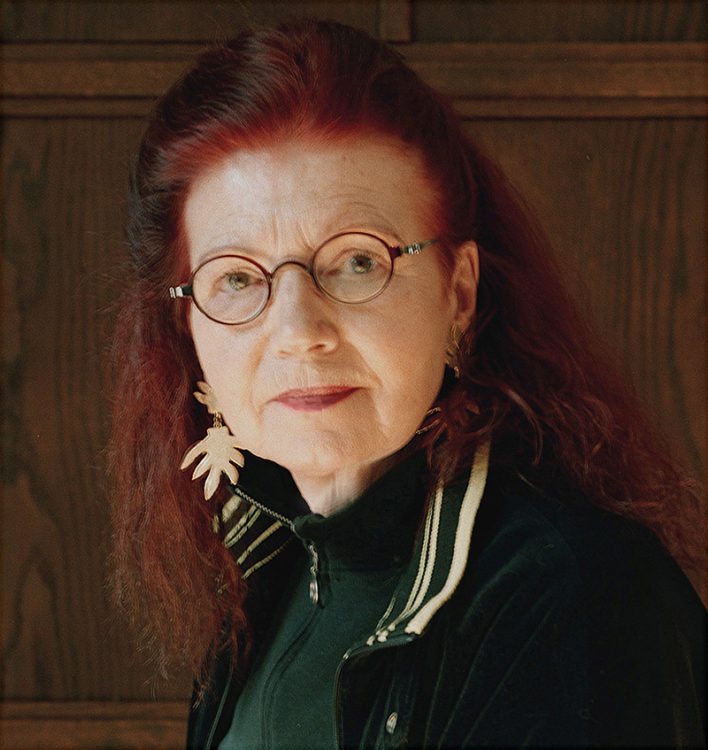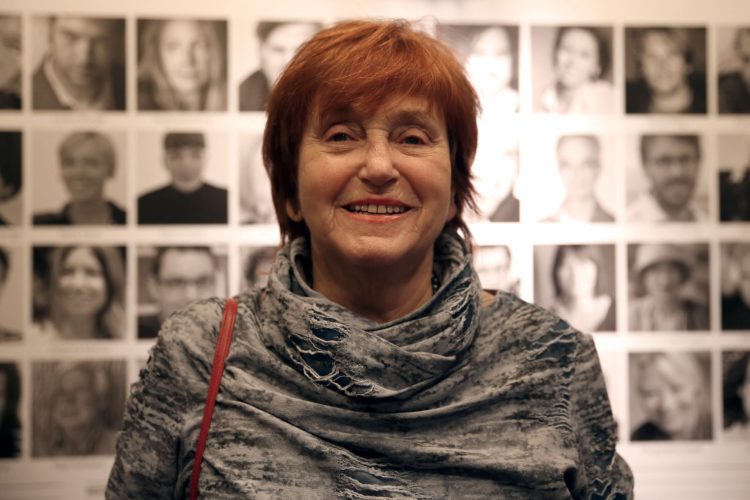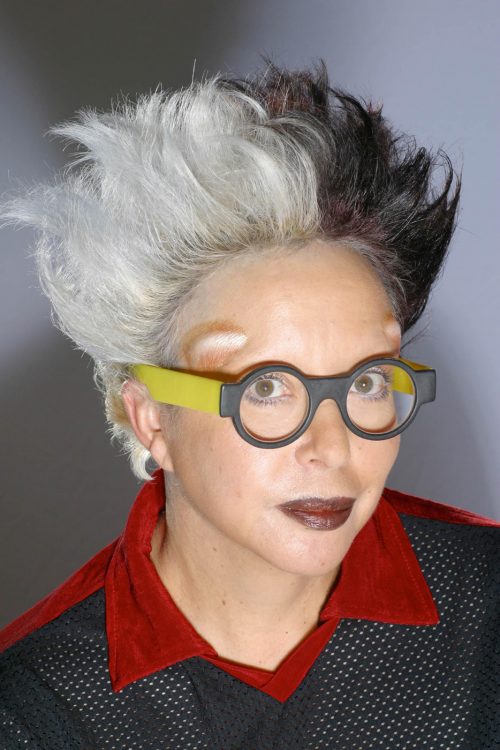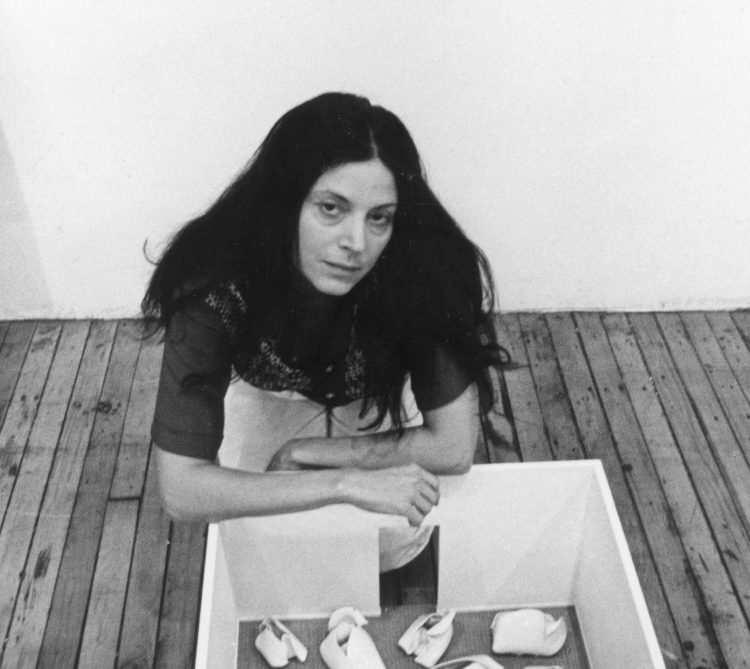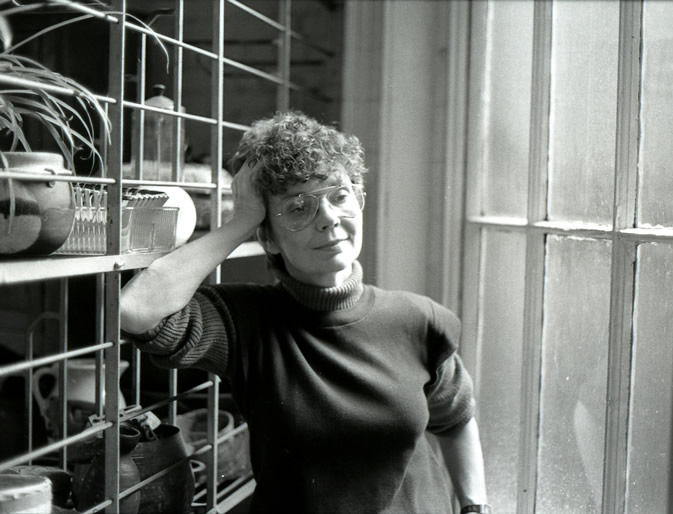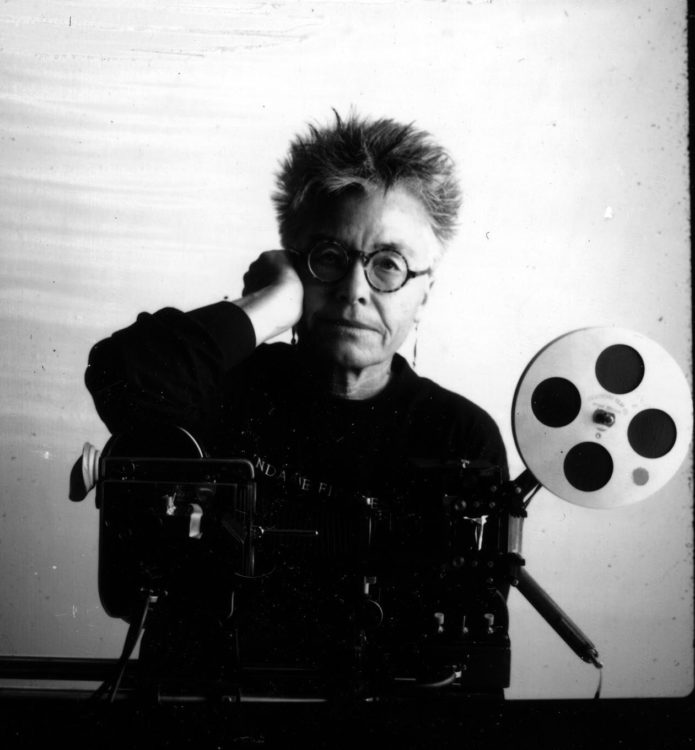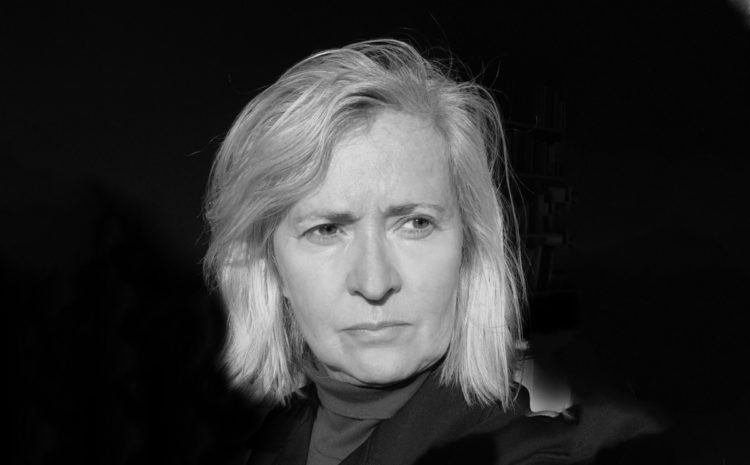Review
Ulrike Rosenbach, Art is a criminal action No. 4, 1969-70, black and white photomontage and felt pen on barite paper, 23.7 x 31 cm, © The Sammlung Verbund collection, © ADAGP, Paris
Since 2010, the Verbund collection has travelled to meet with the ever-changing audiences of a number of different European institutions. Each one undertakes its own selection among the 600 artworks by 48 women artists brought together by Gabriele Schor, director of the Verbund collection, which was founded in 2004 by the main Austrian electricity provider.1
Now, it is the turn of the Zentrum für Kunst und Medien (ZKM) in Karlsruhe to present 400 artworks by 47 artists of its choice, thus affirming the curatorial orientation it has adopted since 2014, notably with the virtual exhibition Frauen Video Arbeiten (2015).
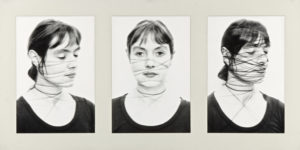
Annegret Soltau, Selbst [Self], 1975, black and white photographs on barite paper, each 38 x 28 cm, © The Sammlung Verbund collection, © ADAGP, Paris
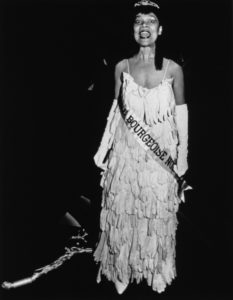
Lorraine O’Grady, Untitled (Mlle Bourgeoise Noire shouts out her poem), 1980-83, gelatin silver print, 24.6 x 19 cm, © The Sammlung Verbund collection, © ADAGP, Paris

Francesca Woodman, Untitled, 1977-78, gelatin silver print on barite paper, 25.1 x 20.2 cm, © The Sammlung Verbund collection
Feministische Avantgarde der 1970er-Jahre aus der Sammlung Verbund, Wien [The Feminist Avant-Gardes of the 1970s in the Sammlung Verbund Collection, Vienna] supports the ambitions of Gabriele Schor who, “on the one hand, seeks to establish a connection between feminism and the avant-garde within the collective consciousness and, on the other hand […] to attract attention to previously unknown aesthetic positions and resituate them within the international context.”2 This is achieved by dividing the works into five sections covering the themes commonly broached by women artists during this emblematic decade on either side of the Atlantic.3 The first section, entitled “Mother, Housewife, and Wife”, puts into perspective the roles that define women socially and presents actions with a performative dimension from the outset, produced for the camera alone (or in front of a very small audience), by Martha Rosler, Letícia Parente, Annegret Soltau, and Ulrike Rosenbach. The second theme, “Locked Up/Escape”, brings into perspective the sense of enclosure felt by these artists and their attempts at liberation, mainly by way of photography. In the “Role Play” section, we find the first photographic series by Cindy Sherman (Bus Riders and Murder Mystery, 1976) and A Portfolio of Models (1974) by Martha Wilson, who anchors the reinvention of the self as a vital necessity.4 The fourth section, “The Body Beautiful”, provides an opportunity to question the role of women within the artistic canons developed by men, by presenting the subtle reappropriations of classical iconography by Francesca Woodman, and the strip-tease of Hannah Wilke behind Marcel Duchamp’s iconic Large Glass – without forgetting to claim a role for women artists within the classical pantheon, with Some Living American Women Artists/Last Supper (1972) by Mary Beth Edelson. Finally, the last theme, “Female Sexuality”, underlines the difficulties female artists face when considering their own sexuality, independently of male expectations, in recurrent attempts to appropriate sexual organs of both sexes. In particular, we find in this section several provocative works by the young ORLAN and VALIE EXPORT.

Birgit Jurgenssen, Nest, 1979, black and white photograph, 29.1 x 40.1 cm, © The Sammlung Verbund collection, © ADAGP, Paris
Beyond the clarity ensured by its organisation into sections, the exhibition manages to identify a shared aesthetic in which the symbolic and physical violence (with Gina Pane) exerted over the female identity and body is represented by artists who do not hesitate to “difference the canon”,5 by fully and firmly rooting their art within their era.
Feministische Avantgarde der 1970er-Jahre aus der Sammlung Verbund, Wien, from 18 November 2017 to 8 April 2018, at the Zentrum für Kunst und Medien (Karlsruhe, Germany).
“The feminist avant-gardes of the 1970s” is one of the two themes chosen in 2004, according to which the collection of Verbund AG, the Austrian leader in electrical energy, has been developed. It is a living collection that acquires new works each year. The collection presented here dates from 2016, and it may have evolved since then. The catalogue associated with it is nonetheless intended to be that of the roving exhibition, in the most variable of its geographies, as well as a “complete documentation of the Verbund collection on the art of the feminist avant-gardes”. See Schor Gabriele, “On the Identity of the Sammlung Verbund Collection, Vienna”, in Feminist Avant-Garde. Art of the 1970s. The Sammlung Verbund Collection, Vienna (Munich: Prestel, 2016), 13-15.
2
Ibid., 13.
3
Lucy R. Lippard was already discussing the “contribution [of feminism] to the avant-garde and/or to the modernist arts of the 1970s” as the 1970s were only just coming to a close. Just like Gabriele Schor and Peter Weibel (director of the ZKM), her ideas are based on the principle that the greatest revolution was “the feminist insistence that the personal (and therefore art itself) is political”. See Lippard Lucy R., “Sweeping Exchanges: The Contribution of Feminism to the Art of the 1970s” (1980), in Art Journal, 40 (1980), no. 1-2: “Modernism, Revisionism, Plurism, and Post-Modernism”.
4
In the work, she represents the figures of goddess, housewife, working girl, professional, Earth Mother, and lesbian, and specifies: “At one time or another, I have tried them all on for size, and none has fit.” Martha Wilson draws her creative material from this inadequacy with relation to the social expectations defined for her; she adds: “The artist operates out of the vacuum left when all other values are rejected.”
5
We are borrowing the expression and its meaning from the title of Griselda Pollock’s book Differencing the Canon: Feminist Desire and the Writing of Art’s Histories (London/New York: Routledge, 1999). The first chapter is “About Canons and Culture Wars”.
Aurélie Arena, "The Feminist Avant-Gardes of the 1970s in Karlsruhe: A Manifesto Exhibition." In Archives of Women Artists, Research and Exhibitions magazine, . URL : https://awarewomenartists.com/en/magazine/gardes-feministes-annees-1970-a-karlsruhe-exposition-manifeste/. Accessed 13 January 2026
